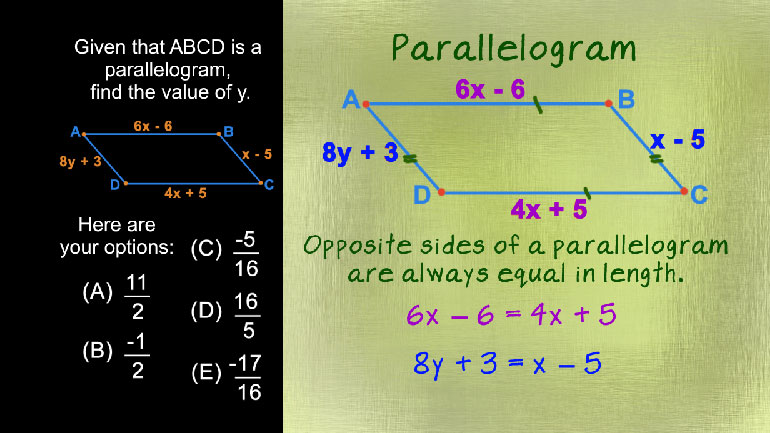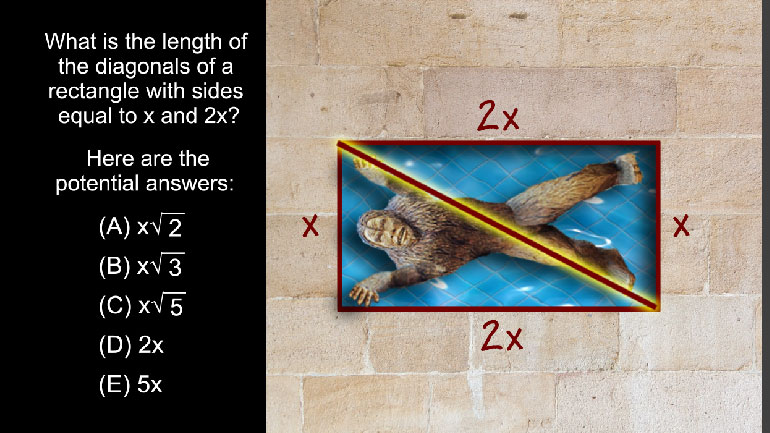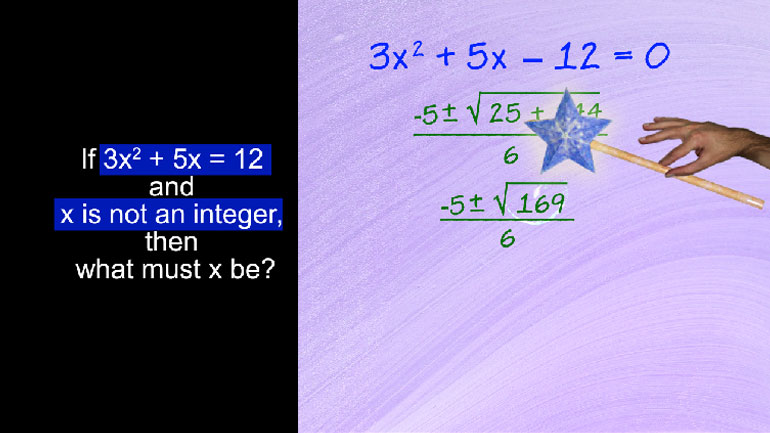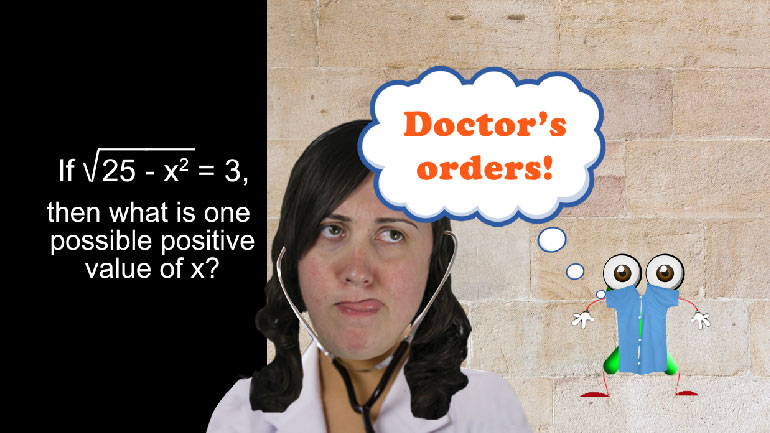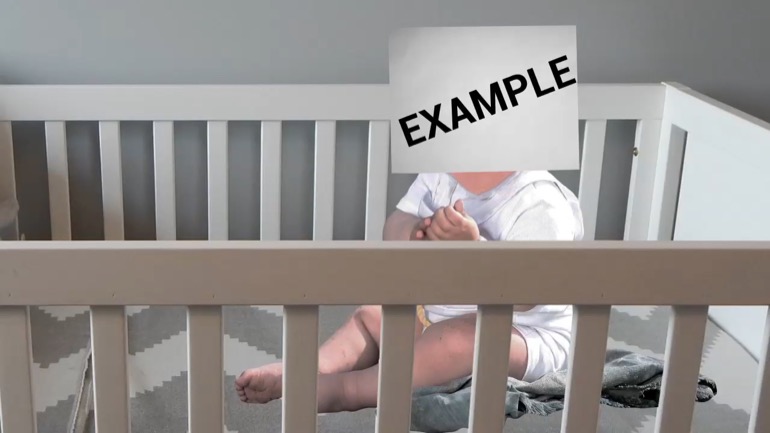ShmoopTube
Where Monty Python meets your 10th grade teacher.
Search Thousands of Shmoop Videos
SAT Math 7.3 Geometry and Measurement 183 Views
Share It!
Description:
SAT Math 7.3 Geometry and Measurement
Transcript
- 00:02
Here’s your shmoop du jour, brought to you by squares within squares.
- 00:07
It’s like a spiraling S’more vortex.
- 00:10
ABCD is a square.
- 00:12
Points A prime, B prime, C prime, and D prime are constructed by translating the points
- 00:17
A, B, C and D over two-thirds the length of the side.
Full Transcript
- 00:23
If the perimeter of A prime B prime C prime D prime is
- 00:28
8 times the square root of 5, what is the perimeter of ABCD?
- 00:33
Here are the potential answers...
- 00:37
We’ve got one square – ABCD. Inside that square, we’ve got a slightly smaller one…
- 00:43
that we’ve created by plunking down four new points along the first square’s edges.
- 00:48
There are really only two juicy bits of information we’re given.
- 00:52
First, that the new points, which we call “prime,” are translated from their original
- 00:58
locations 2/3 of the way along each side.
- 01:01
And second, that the perimeter of that inner circle is 8 square root of 5.
- 01:07
All righty…the easiest piece to extrapolate is the perimeter of the inner square.
- 01:12
We know that square has 4 equal sides…so if the total perimeter is 8 square root of
- 01:17
5, then the length of each side must be exactly 1/4 of that…or 2 square root of 5.
- 01:23
The next thing we should notice is that our inner square has magically created some triangles…
- 01:29
We’re not given any measurements for the outer square, but we can always call one
- 01:33
side “x”, so… let’s do that.
- 01:36
Because we’re told where all those “prime” points are, we know that one side of our triangle
- 01:40
is going to be 1/3x and the other side is going to be 2/3x.
- 01:44
We now have ways to reference all three sides of one of our triangles.
- 01:48
So…let’s Pythagorize ‘em…
- 01:50
1/3x squared plus 2/3x squared equals 2 square root of 5 squared.
- 01:57
We get 1/9x squared plus 4/9x squared equals 4 times 5.
- 02:02
Simplifying further, 5/9x squared equals 20.
- 02:07
We can now multiply both sides by 9 to get 5x squared equals 180…
- 02:11
…and then divide both sides by 5 to get x squared equals 36.
- 02:15
Last step – take the square root of both sides, and x equals 6.
- 02:19
Now…be careful – that’s only the length of one side, and we’re looking for the entire perimeter.
- 02:25
So…just multiply that 6 by 4 and we get there. The answer is 24 or E. Done.
Related Videos
SAT Math 2.1 Geometry and Measurement. What is the measure of angle z in terms of x and y?
In 2014, the unemployment rate of one county in California was 7%. In another county, the unemployment rate was 11%. Which of the following express...
Angela is making cookies for a bake sale. She expects each batch of her cookies to sell for $40. It costs her $10 to make one batch of cookies, and...
